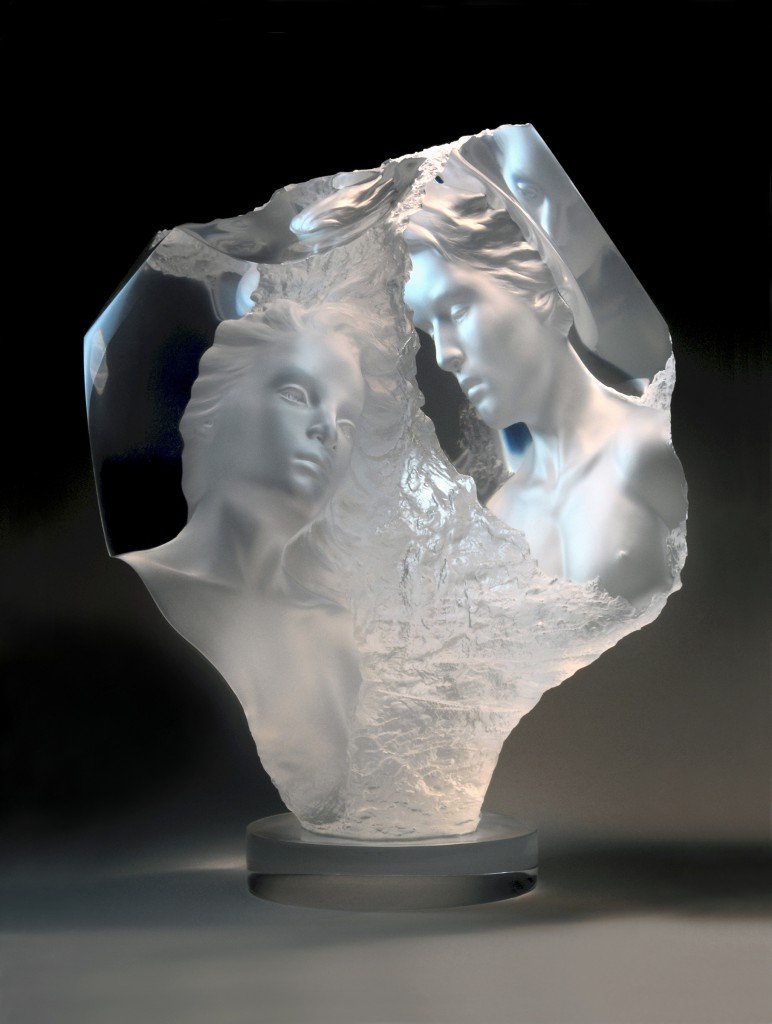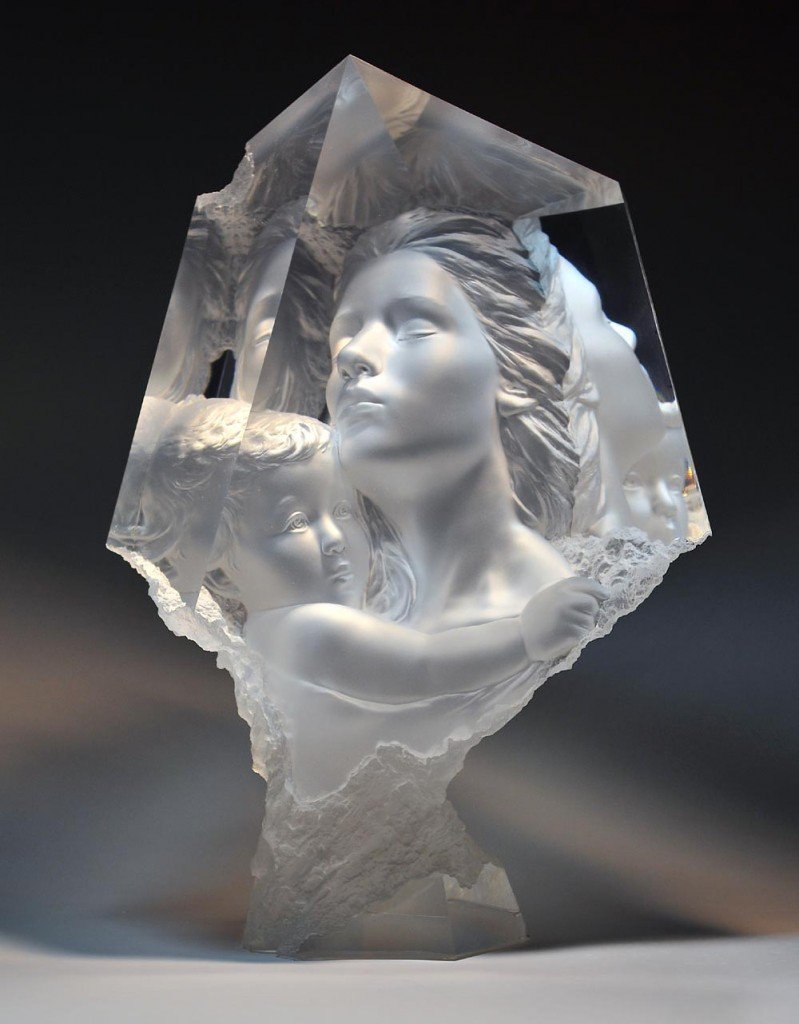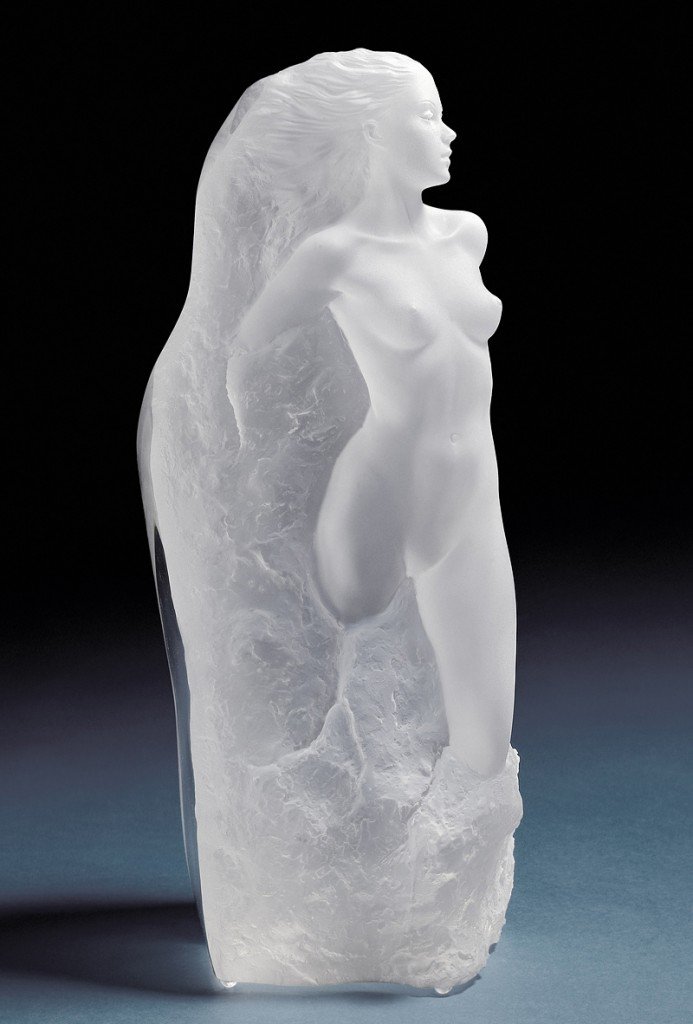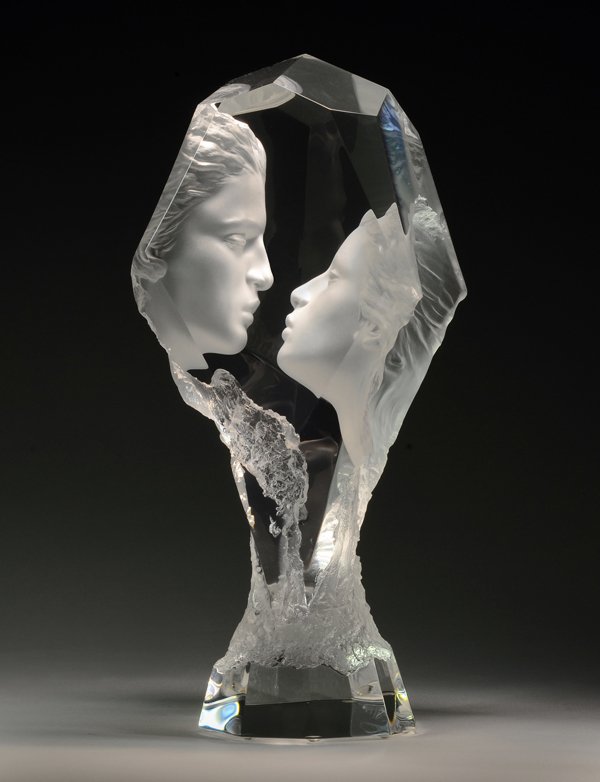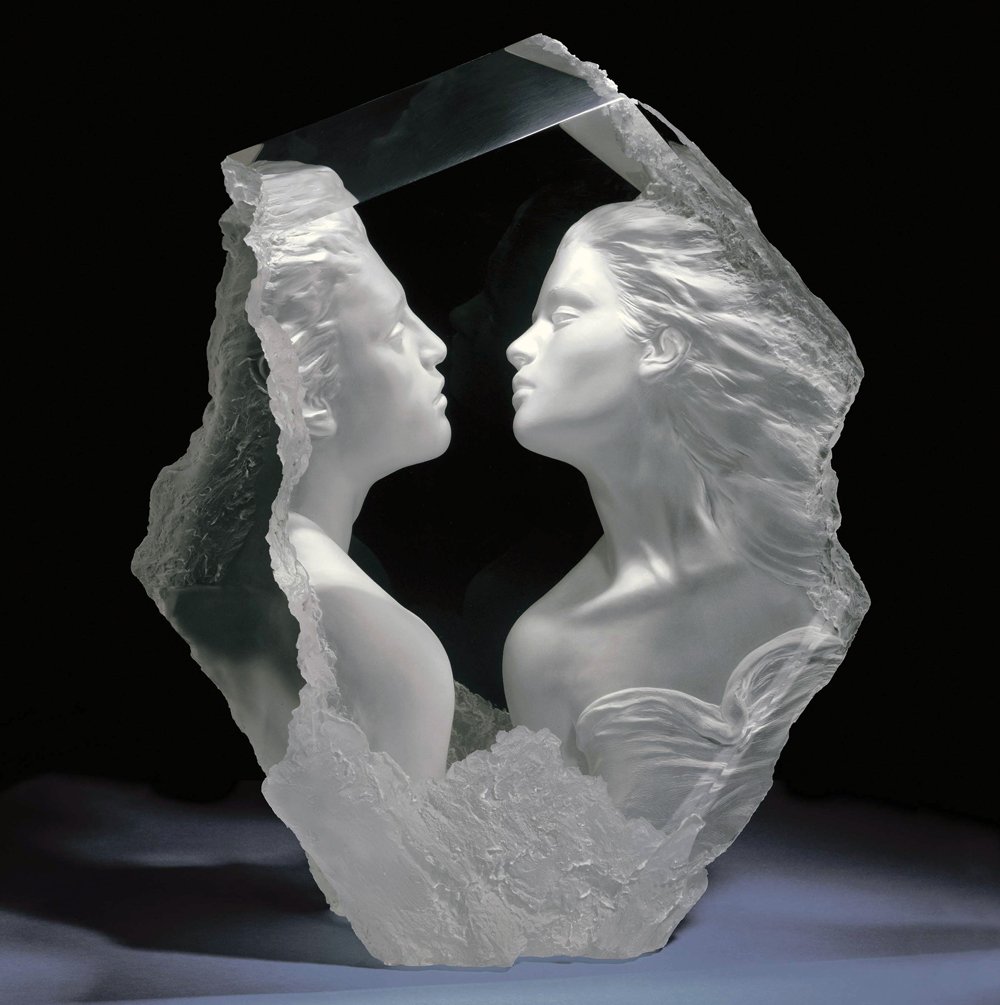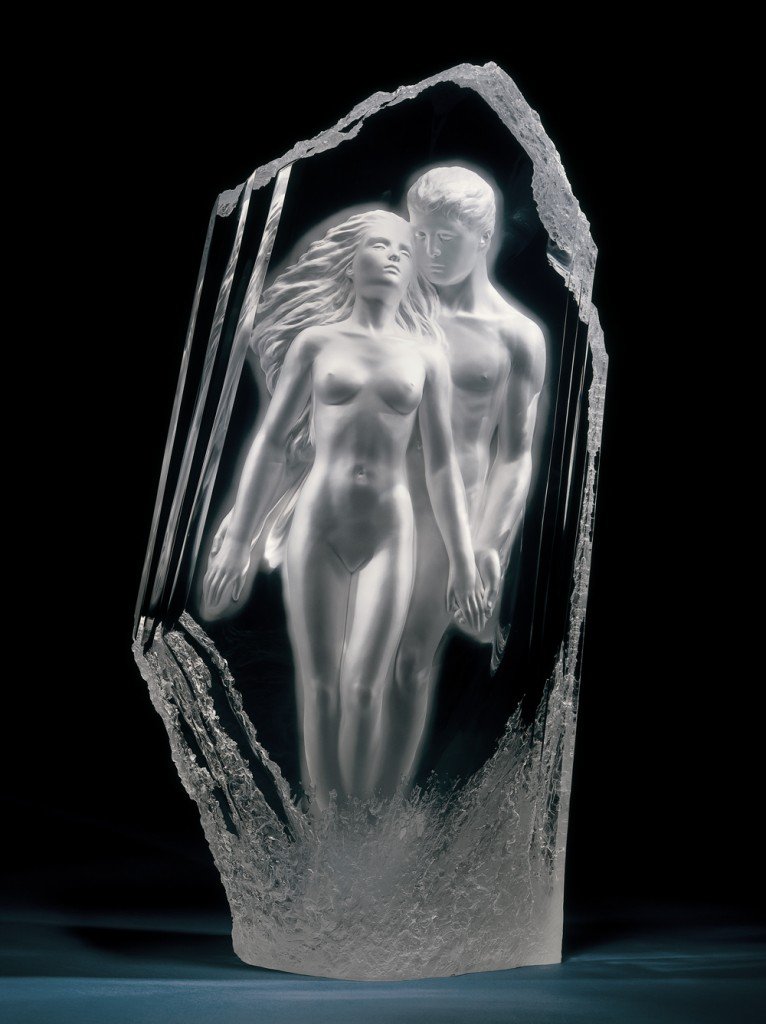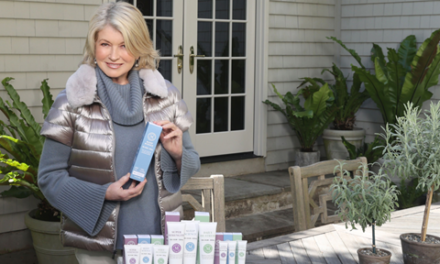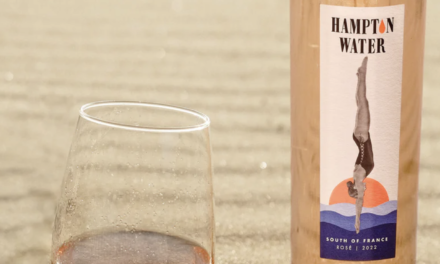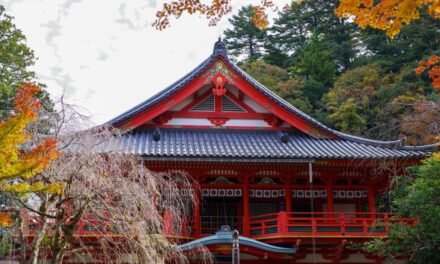
Clearly Beautiful ~ a Sculptor’s Vision
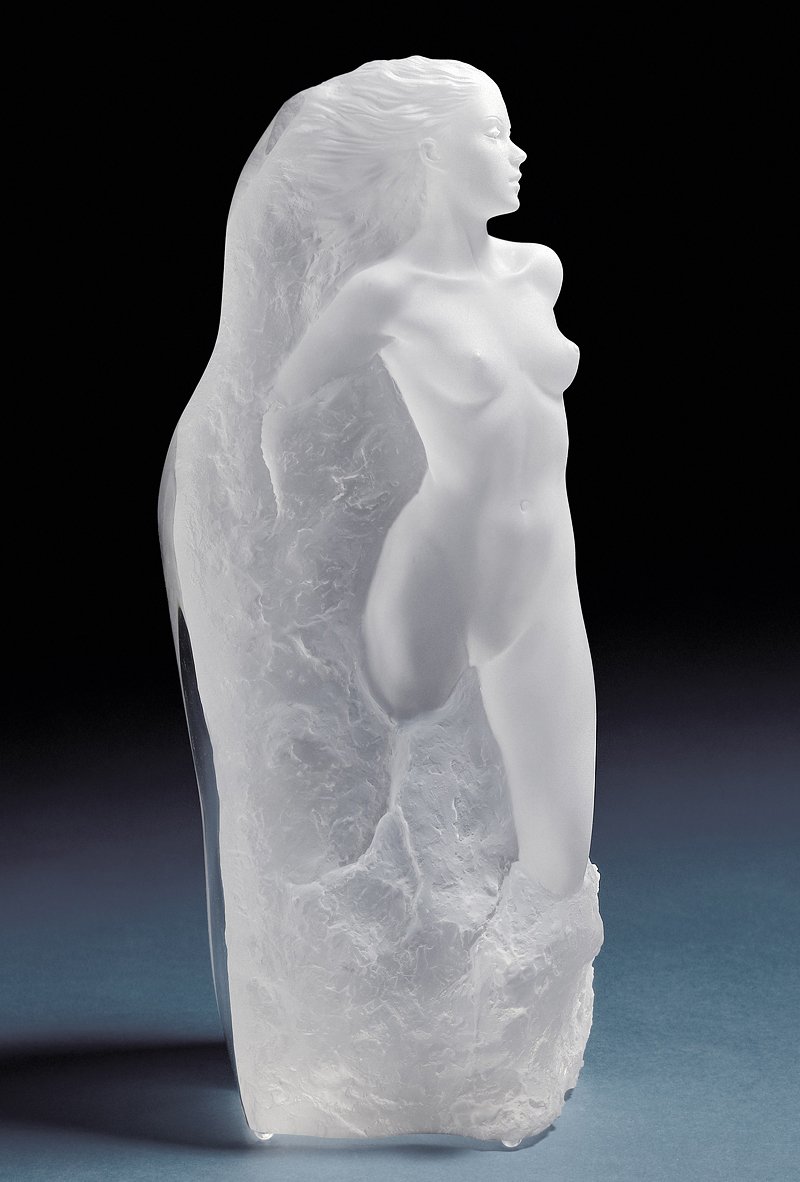
Why is it that we respond to certain styles of art more than to other styles? What does it say about us individually, and what does it say about the artist, when a particular work of an artist resonates with our soul, while the work of another artist may leave us cold and unmoved?
As a gallery owner, I spend every day surrounded by the beauty created by artists who share an especially joyous and passionate sense of life. We asked Michael Wilkinson, one of our most popular sculptors, to share his thoughts on Art, on why Art is important to him, and on why he creates artwork that he does, the way he does.
Linda: Michael, thanks for taking time out from your sculpting to answer our questions today.
Michael: Very much my pleasure, Linda.
Linda: Firstly, as the pre-eminent figurative sculptor working in clear acrylic, why did you choose to become an artist? Why Art, as a profession?
Michael: Art has always moved my soul. Whether it is the heroic grandeur of Michelangelo’s David, the love of a man for a woman as in Rodin’s The Eternal Idol, or the radiant world depicted in the sparkling drawings of Frank Lloyd Wright, art has always affirmed and fueled my deepest beliefs about the beauty of life.
Linda: Can you tell us why have you chosen to work in the particular style that you do, focusing on beauty as you do?
Michael: In an age where the purpose of much art is to shock and repulse, where our psychic and esthetic sensibilities are under assault, Romanticism, the art of beauty, purpose and meaning, is restorative and life affirming. The beauty of beauty is that it is an antidote to ugliness. Beauty cleanses and inoculates against the unpleasantness of the world.
Linda: In terms of style, you consider yourself a Romantic Realist?
Michael: Yes! For me, realism is the most accessible kind of art, especially when it portrays the human form.
Linda: What is it about the human form as a subject that attracts you?
Michael: Most artists would agree that the human form is the most difficult to recreate. But, in my experience, the realistic portrayal of the human form is the most deeply satisfying, for it is unmatched in expression of emotion and psychological insight.
Linda: You’ve created a body of work renowned for its unique beauty and universal appeal. How do you choose your themes?
Michael: When working, I am always mindful of this maxim: ‘The greater a work of art, the more universal its meaning.’ I strive to create imagery based on broad themes that are universally understood, yet may inspire a deeply personal response in each individual.
Linda: You work in traditional bronze, but some of your most popular work as been in acrylic. Why acrylic as a medium?
Michael: My acrylic sculptures are a blend of figurative and abstract forms, a fusion that I enjoy creating and to which acrylic is beautifully suited. Acrylic is a truly modern material and working with it is like working with no other medium. I start out with clay, a lump of earth, but end up having created an ethereal world infused by light. A wonderful aspect of acrylic sculpture is that it is clear and has an interior: a “fourth dimension” that allows the viewer to look into the artwork. This characteristic offers the greatest challenge in working with the material, because the original sculpture model is opaque clay or plaster. While creating the model, I must envision through the plaster what is going on inside the work—the reflections and refractions as they will appear in the final clear artwork. This is the most difficult aspect of my acrylic art, but when I get it right it is the most satisfying.
I am an architect by training and I have always been fascinated by the surroundings people live in—their worlds. The interior of an acrylic is a light-filled world that makes it possible for me to tell stories in space and time, a world in which my figures come alive. The men and women I create are conscious in their lives and have the power to make their dreams a reality. I hope that collectors see and appreciate this. I believe art should uplift the human spirit, show us what is possible. That is why I seek the ideal in my art—the ideal illuminates our potentialities and acts as an affirmation of the best within us.
Linda: Thanks for sharing your world with us, Michael. We’re honored to represent your work.
Michael: Thank you in turn. It’s a great relationship.
Michael Wilkinson’s work is represented in private and corporate collections worldwide. With over two decades of international shows and numerous one-man gallery exhibitions, the artist has become one of the prominent sculptors of our time, creating beautiful and powerful works unique in the history of art.
Wilkinson sculpts in clay and casts much of his work in acrylic. The chemical name of acrylic is Methyl Methacrylate. In the 1870s, researchers began development of a man-made compound that could be molded. The resin was developed by scientists at Rohm & Haas through the early part of the 20th century and brought to the US market in the 1930s. One of its early applications was for the bubble window on World War II aircraft.
Acrylic offers a number of outstanding characteristics, including exceptional optical clarity, transparency, optimum light transmission, UV stability, strength and durability. A transparency rate of 93% makes acrylic the clearest material known. Very thick glass will have a green tint, while acrylic remains clear. The acrylic used to make Wilkinson sculptures does not yellow, turn brittle or crack over time. If properly cared for, acrylic remains new looking regardless of age or exposure to sun. Acrylic is transparent, crystal clear and extremely lightweight, but its real beauty lies in its versatility as a creative medium.
Michael Wilkinson’s study of optics has made it possible for him to use acrylic in ways that were unavailable to artists before development of the medium. His use of reflections, refractions, negatives, and embedments enables him to address important themes and create complex worlds and narratives in a single sculpture. His work engages the viewer with beautiful stories; his sense of life, as it could be and should be, comes through in each piece, like a beautiful light that warms the heart and calms the mind.
The artist’s collection of acrylic and bronze castings can be enjoyed at Quent Cordair Fine Art, where Quent and Linda Cordair have provided the finest Romantic Realist art to collectors around the world since 1996. The physical gallery, fully restored and reopened subsequent to earthquake damage, is located in Napa, California. For those unable to visit Napa, the art may be enjoyed via the gallery’s award-winning website at www.cordair.com.
All images appearing in this article are the property of Quent Cordair Fine Art and the artists they represent. The images are protected by U.S. Copyright Laws, and are not to be downloaded or reproduced in any way without the written permission of Quent Cordair Fine Art, 1301 First Street, Napa, CA 94559. Copyright 2014 Quent Cordair Fine Art – All Rights Reserved.










